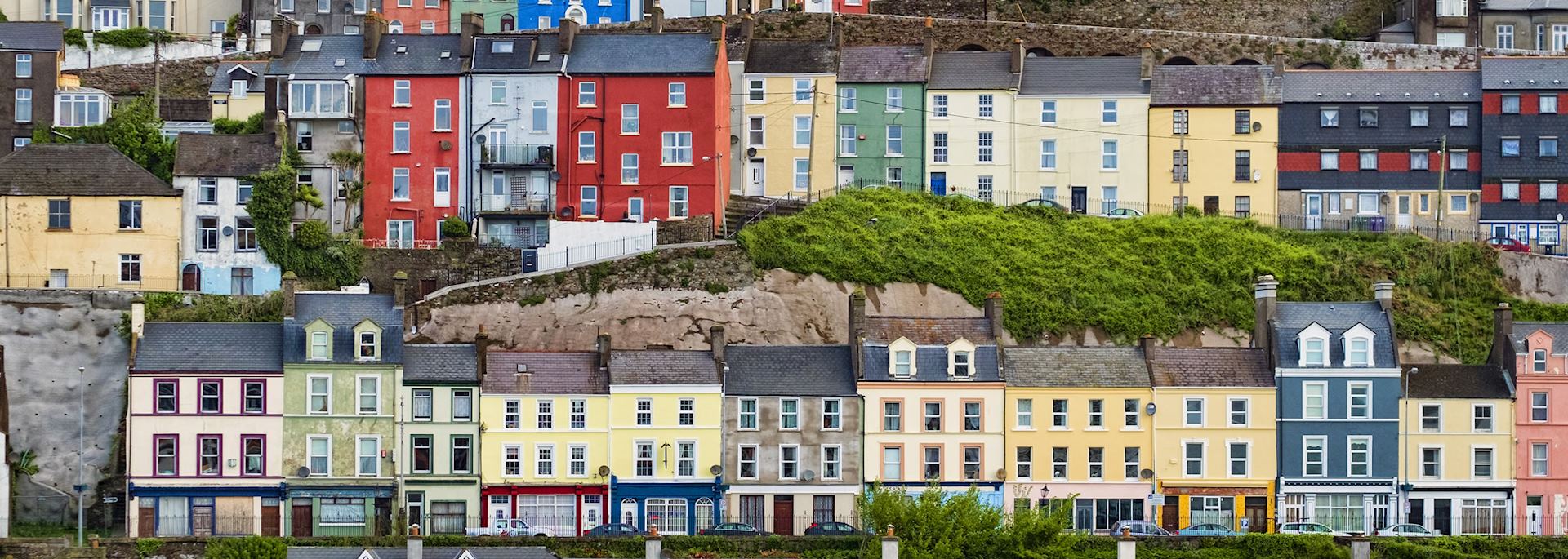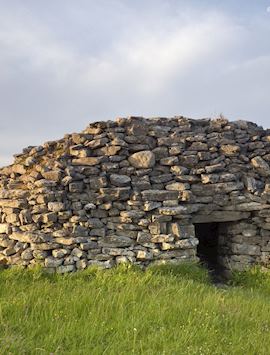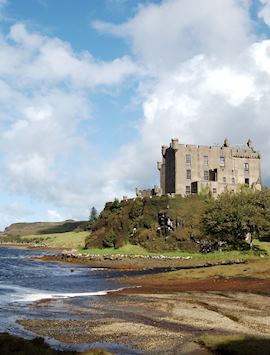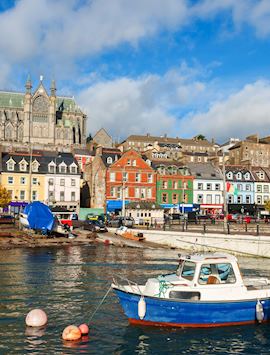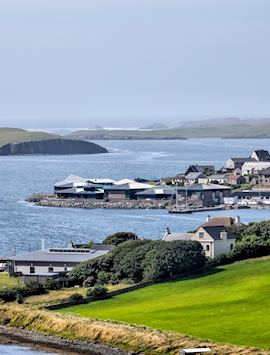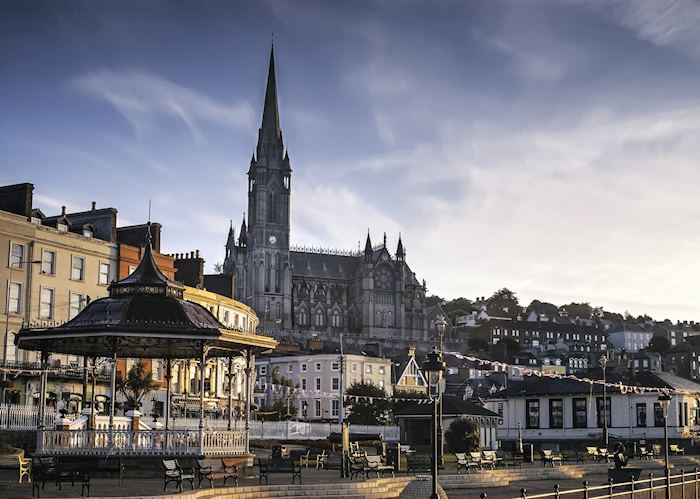Jump to:
Rows of brightly painted Victorian houses lead up from the waterfront in Cobh (pronounced 'cove') to a soaring cathedral that overlooks what is one of the world's largest natural ports.
A small town with a rich maritime heritage, Cobh has many sad stories to tell. Millions of emigrants left Ireland for a better life from 'Heartbreak Pier', and it takes its place in history as the last port of call for the ill-fated Titanic, and as the rescue base for victims of the attack on the Lusitania. Today, it’s a pleasant little waterfront town with a series of museums telling the story of its links to maritime disasters, the Great Famine, and its place in Irish-American history.
In the restored Victorian railway station, the Cobh Heritage Centre explains the town's contribution to the story of Irish emigration and helps visitors trace their ancestors. An exhibition on the Titanic traces its connection to the town, but you'll find more information at the Titanic Experience based in the original White Star Line ticket office in Casement Square. Check in and you're taken on a journey through recreated rooms of the liner to learn about the fate of its passengers, the sinking of the ship in April 1912 and the rescue operation to save those on board.
Cobh's final brush with seafaring tragedy came on 1st May 1915, when the Cunard ocean liner RMS Lusitania left New York bound for Britain. The Germans had declared the seas around Britain a war zone, and the German embassy in New York had warned against travel.
On 7th May, the Lusitania was struck by a torpedo from a German U-boat 18 km (11 miles) off the south coast of Ireland and swiftly sank. The rescue operation was launched from Cobh (then called Queenstown), which was a British Naval Admiralty base at the time.
The attack killed almost 1,200 passengers and launched a political storm. A memorial in the town remembers the victims of the tragedy, whose story is told in both the Cobh Heritage Centre and the Cobh Museum.
In the same year, Cobh's massive neo-Gothic cathedral was finally finished. Construction had begun in 1867, but a lack of funding had hampered progress. It took donations from the families of Irish emigrants who had safely settled in the USA and Australia to see the building work completed.
Today, Saint Colman's Cathedral dominates the town from its hilltop position. Inside, it has a vaulted nave, marble columns and elaborate stonework in its chapels and memorials. Its design also incorporates a 49-bell carillon installed in the church tower.
who's been there
-
617-223-4521617-223-4757
- Make an inquiry
Suggested itineraries featuring Cobh
Our itineraries will give you suggestions for what is possible when you travel in Cobh, and they showcase routes we know work particularly well. Treat them as inspiration, because your trip will be created uniquely by one of our specialists.
Places near Cobh
- Cork 9 miles away
- Kinsale 14 miles away
- Killarney 54 miles away
- Kenmare 55 miles away
- Waterford 58 miles away
- Limerick 59 miles away
- Kilkenny 72 miles away
- County Wexford 85 miles away
- The Burren 86 miles away
- Dingle Peninsula 87 miles away
- Galway 104 miles away
- Inis Mór 105 miles away
- Dublin 134 miles away
- Connemara 135 miles away
- Newgrange and the Boyne Valley 149 miles away
- Sligo 168 miles away
- Enniskillen 175 miles away
- County Donegal 195 miles away
- Northern Ireland 210 miles away
- Belfast 214 miles away
- Derry/Londonderry 222 miles away
- Giant’s Causeway 246 miles away
Photos of Cobh
Ideas for experiencing Cobh
Our specialists seek out authentic ways to get to know the places that could feature in your trip. These activities reflect some of the experiences they've most enjoyed while visiting Cobh, and which use the best local guides.
-
Titanic Trail walking tour in Cobh ![Cobh]()
Titanic Trail walking tour in Cobh
Titanic Trail walking tour in Cobh
Explore the historic little town of Cobh on a walking tour that reveals its place as the main departure point for Irish emigrants, the last port of call for the Titanic and the hub of the Lusitania rescue mission.
View details
